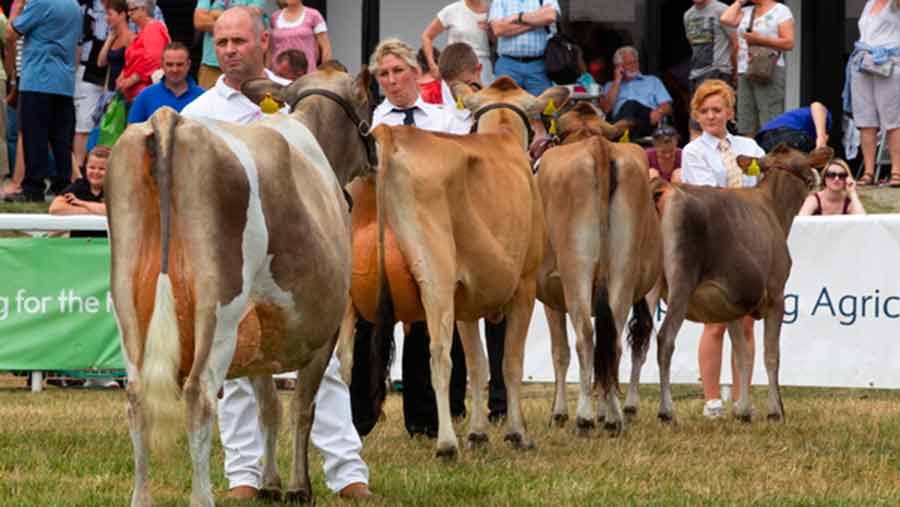Opinion: Data will drive livestock breeding
 © Tim Scrivener
© Tim Scrivener Summer is here and, with Wimbledon just around the corner, the weather has predictably taken a decidedly damper turn.
That downturn on the weather also heralds the start of the show season; a time when pedigree breeders the length and breadth of the country break out the white coats, clippers and shampoo for a few weeks on the road, showing off their life’s work to an admiring public.
For me, a walk along the cattle lines is the highlight of any show and I never fail to be impressed by the lengths that breeders go to, to exhibit their stock to such high standards.
The diversity of breeds on display is another treat – reflecting not only national or regional characteristics but also anthropomorphic stereotypes as well.
See also: We have neglected our soils for too long
Take, for example, the Limousin: French, flighty and high maintenance.
Then there’s the docile easy-going Hereford who, if human, one could easily imagine enjoying a joke over a pint of cider at a village cricket match.
Contrast that with the more cosmopolitan yet volatile Jersey, particularly the male of the breed, who might be more inclined to spend a summer evening with his Russian chums in a French fishing port, debating the pros and cons of wider European integration over a couple of bottles of lager or 12.
 David Alvis, managing director Yorkshire Dairy Goats
David Alvis, managing director Yorkshire Dairy GoatsHaving succeeded in alienating half the UK’s pedigree cattle breeders in under 250 words, I might as well keep going and use the remainder of this column to upset the rest.
Pedigree breeding is undoubtedly an art form. It’s also one that has historically shaped the global agricultural landscape.
But one could argue that for all its aesthetic attributes, slavish adherence to increasingly anachronistic definitions of what a “breed” is, or indeed should be, will ultimately lead to our livestock sector continuing to lose ground to more competitive producers in other regions, less constrained by the whimsical and subjective strictures of breed identity.
The pig and poultry sectors, who have historically enjoyed far less protection and market support than their ruminant contemporaries, have long since unhitched themselves from the yoke of breed loyalty.
They have, out of necessity, innovated their way to a level of global efficiency and competitiveness that many beef, sheep or dairy producers can only dream of.
Advances in the use of hybrids and the exponential growth and influence of genomics has fundamentally changed the way we should be looking at livestock breeding.
Hybridisation and genomics are tools that can be used successfully in isolation, but are highly complementary and together offer a more objective, accurate and faster way of identifying and selecting for those traits that drive genuine value for producers and consumers alike.
They are truly disruptive technologies that are, at the same time, great levellers, yet sources of competitive advantage.
To realise their full potential, requires a level of record-keeping and data-recording at an industry-wide level that is still perhaps alien to some.
But given that the age old adage “if you don’t measure it, how can you manage it?” is as true today as ever, this is a discipline, the benefits of which will be seen far beyond simple increases in genetic gain.
Claims that this will lead to the loss of breed identity through the morphing of traditional breeds into anodyne, uniform clones is unfounded.
Livestock breeding has always been a dynamic, evolving process and diverse markets will continue to demand diverse products.
How that diversity manifests itself will change, but the art of livestock breeding will endure.
David Alvis is based in the East Riding. He is a Nuffield Scholar and formerly co-managed the Technology Strategy Board’s sustainable agriculture and food.
